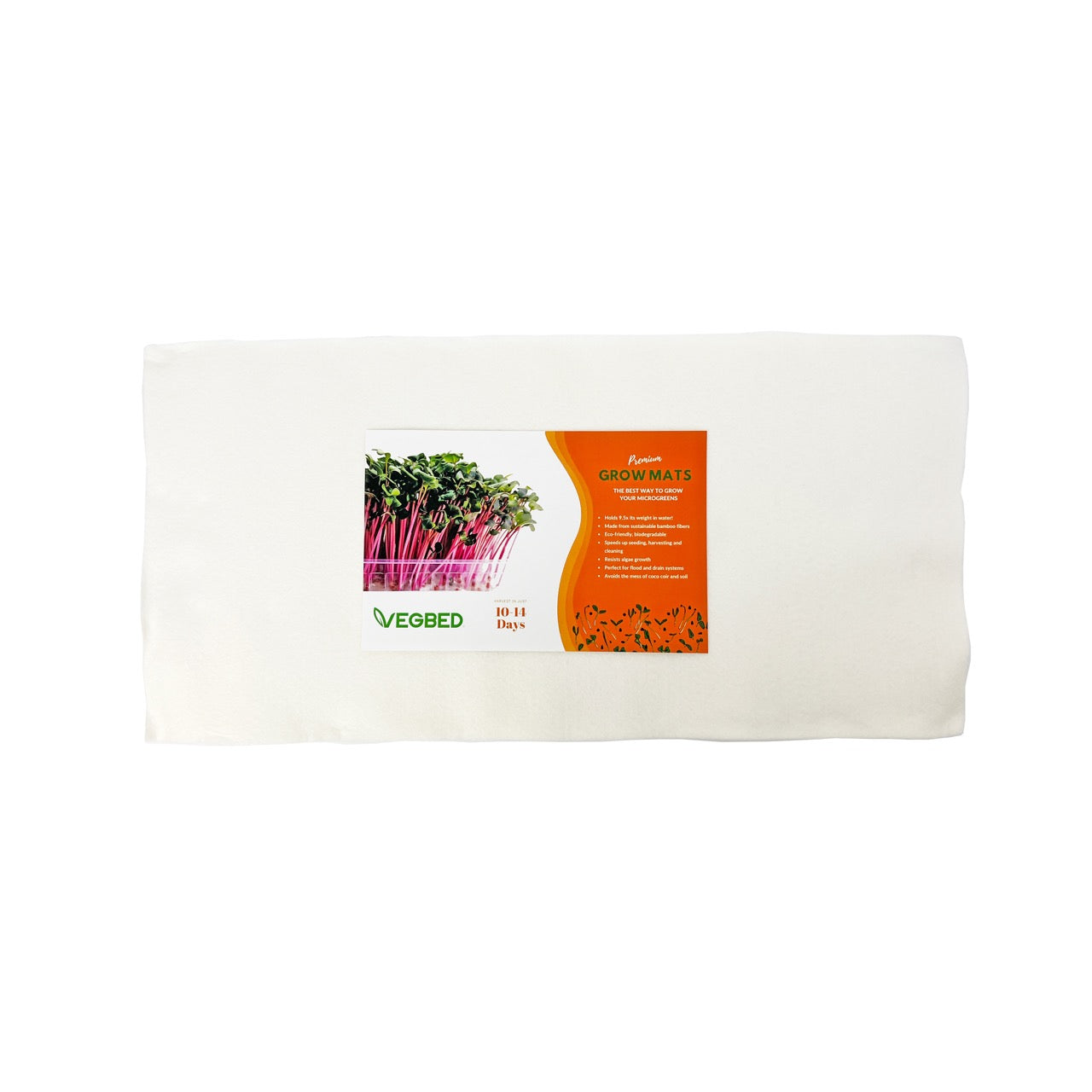When people talk about indoor farming, you usually hear about the clean setups, the steady harvests, and how efficient everything looks. All true. But there is one part of the story that deserves more attention: waste.
Every farm deals with it. Growing mats get tossed out. Buckets of nutrient water go down the drain. Plant trimmings pile up. On their own, these pieces might look small, but together they add up to a major problem.
At Vegbed, we never treated waste as something to ignore. We treat it as something to manage and to turn into value. Sustainability is not an add-on for us. It guides how we design products and run our farms. Handling waste effectively is one of the clearest indicators that a farm is serious about sustainability.
Why waste matters
Many farms follow the same pattern: use what you need, then throw away what is left. It is an easy path, but it is costly in more ways than one.
A bag of used grow media in a landfill leaches and breaks down slowly. A drain filled with nutrient-rich water can disrupt local waterways. Over time, those choices make it harder for farming to be part of a healthy food system.
So we changed the question. Instead of asking how to get rid of waste, we asked what waste can become. That one change shifted our approach across the whole operation.

Turning spent media into compost
A lot of farms discard grow mats or coco coir after one or two cycles. We decided to treat that material as a resource instead of trash.
After each harvest, we gather spent mats, roots, and leftover plant material. That mix goes into our composting system on site. We combine the materials in balanced ratios, maintain airflow and moisture, and monitor temperature as the pile breaks down.
In a few weeks, that material becomes dark, nutrient-dense compost. It is full of microbes that help plants. We use the compost in test beds and to top up new growing media. We are also working on ways to share it with local gardeners and community farms.
This process cuts disposal costs and reduces the need for new inputs. It also keeps organic matter cycling in the local system instead of getting buried in a landfill.
Recycling water instead of dumping it
Water seems abundant until you actually measure how much goes through a farm. Nutrient solutions change as plants take up elements. Many operations simply drain and replace the water.
We could not accept that. Water is too valuable. So we put a system in place to clean and reuse it.
First, we filter out organic bits. Then the water goes through UV sterilization to reduce pathogens. Sensors test pH and electrical conductivity. Automated dosing adds back only what the water needs.
This lets us reuse more than 95 percent of our water. The savings are huge. We cut thousands of gallons from our annual use, and the crops get a consistent nutrient blend each cycle.

Other waste streams to manage
Composting media and recycling water are central, but waste hides in other places too.
Packaging is one. We moved to compostable and recyclable options. A container should not outlast the food inside it.
Energy is another. We use efficient LEDs and tune our climate systems so they do not consume power unnecessarily. Less wasted energy means lower bills and less environmental impact.
Then there is the local loop. When we have extra compost or byproducts that other growers or community projects can use, we share it. That keeps useful materials in play and supports the local food system.
All of these moves add up. None of them is a single silver bullet, but together they change the footprint of our operation.
Practical steps you can take today
If you are running an indoor farm and want to reduce waste, start small and build from there.
Collect your spent media and set up a simple compost system. A tumble bin or a small outdoor pile works. If space is tight, vermicomposting is compact and efficient.
Capture and filter your nutrient runoff. Even a basic settling tank and UV unit will cut disposal and reclaim resources. Sensors and automated dosing are best, but you can begin with manual testing and gradual improvements.
Audit your packaging. Replace single-use plastic where you can. Compostable trays and recycled paper options are increasingly available.
Train your team. Waste reduction works best when everyone knows the why and the how. Simple habits like separating streams and chopping up large pieces speed breakdown.

Why it matters to customers and partners
Consumers and retailers are paying attention. Buyers want to know where their food comes from and how it was produced. When you can show a clear plan to manage waste, you build trust.
Restaurants and grocers often prefer suppliers who can demonstrate responsible practices. Composting, water reuse, and recyclable packaging are tangible signs that you are running a thoughtful operation.
For community partners, sharing compost or leftover materials creates goodwill and practical value. Those relationships matter more than you might expect as you scale.
Closing the loop
Waste does not need to be the last step in production. With composting, water recycling, and smarter choices, it becomes the start of the next cycle.
At Vegbed, managing waste is part of how we design products and run farms. Our goal is simple: reduce what goes to the trash, bring resources back into use, and support the communities around us.
If you grow indoors, you already have a big advantage. Controlled systems make it easier to separate and reuse streams. Start with one change, and build from there. Small steps become a system that keeps resources moving and makes farming more resilient.
When growers treat waste as material, not garbage, they do more than save money. They help build a food system that can last.



